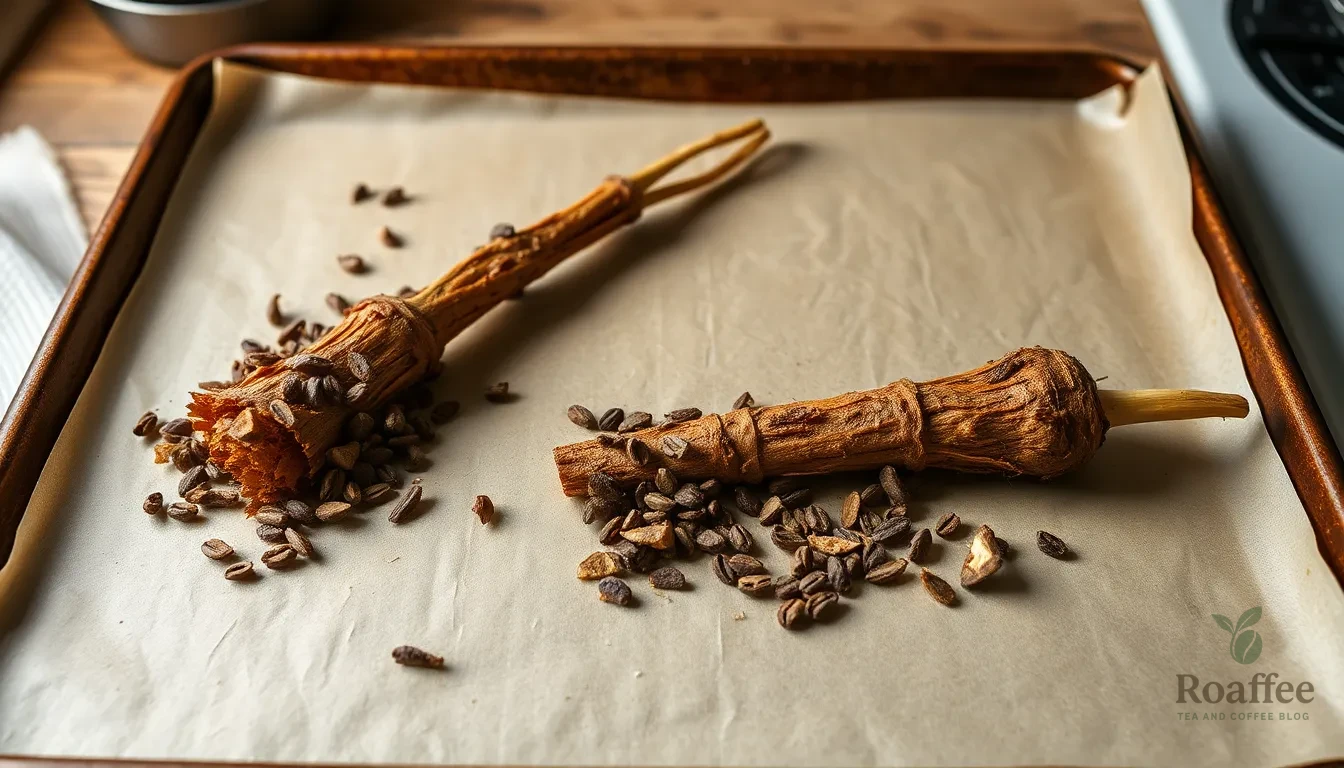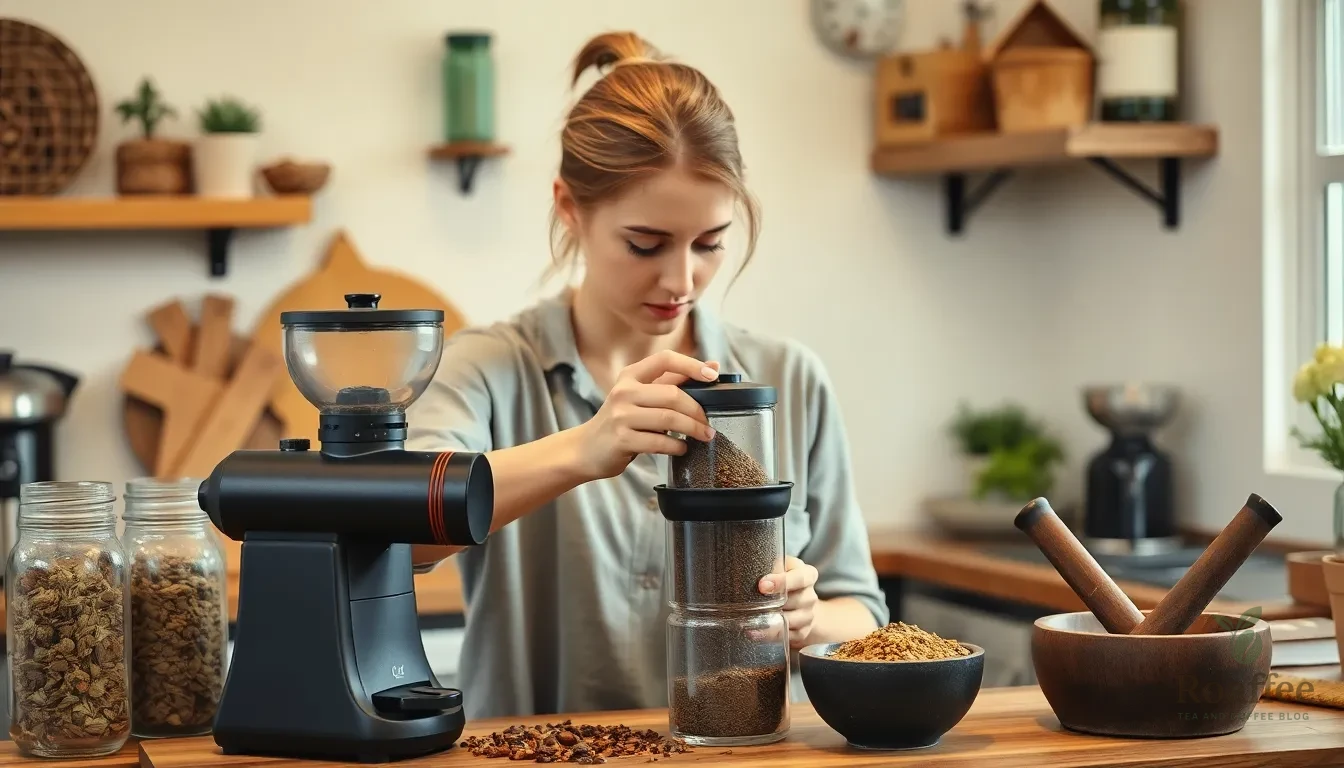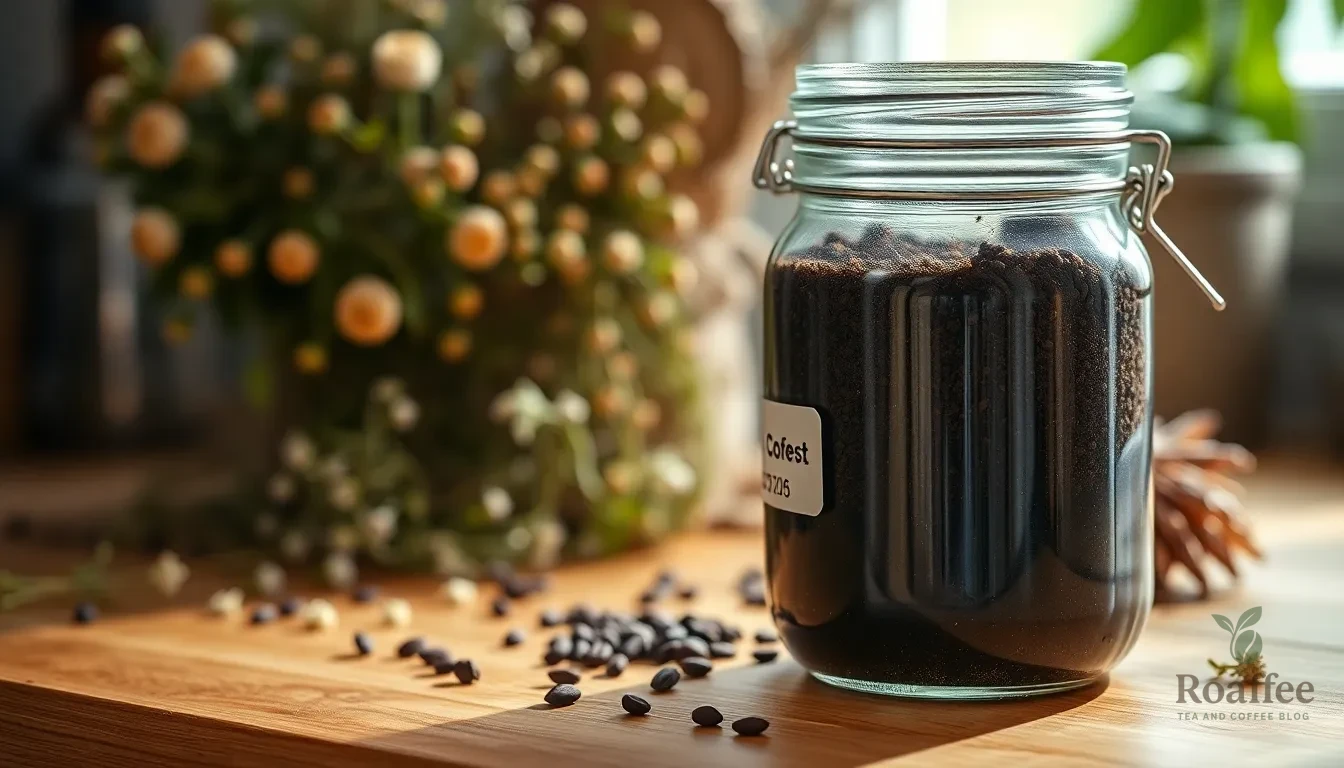We’ve all been there – craving that perfect cup of coffee but wanting something healthier and caffeine-free. Dandelion coffee offers the rich, earthy flavor we love without the jitters or afternoon crash. This traditional beverage has been enjoyed for centuries across Europe and North America as a natural coffee substitute.
What makes dandelion coffee so special? Every part of this humble “weed” packs incredible nutritional benefits. The roots contain prebiotics that support digestive health while providing essential vitamins and minerals. Plus, it’s naturally bitter and robust – giving you that satisfying coffee experience we all crave.
Making your own dandelion coffee is surprisingly simple and incredibly rewarding. We’ll show you how to transform fresh dandelion roots into a delicious, aromatic brew that rivals your favorite coffee shop blend. The best part? You can forage these ingredients right from your backyard or local park.
What You’ll Need
Making dandelion coffee at home requires minimal equipment and just one key ingredient. We’ll walk you through everything necessary to create this earthy and nutritious beverage.
Equipment
We recommend gathering these essential tools before starting your dandelion coffee preparation:
- Sharp digging tool – A sturdy spade or dandelion weeder works best for harvesting roots
- Garden gloves – Protect your hands while foraging and cleaning roots
- Large colander – Essential for washing and draining the harvested roots
- Vegetable brush – Removes dirt and debris from root surfaces effectively
- Sharp knife – Needed for chopping roots into uniform pieces
- Large baking sheet – Provides ample space for roasting the root pieces
- Parchment paper – Prevents sticking during the roasting process
- Coffee grinder or food processor – Grinds the roasted roots into coffee-like grounds
- Fine mesh strainer – Filters the brewed coffee for a smooth finish
- French press or coffee maker – Brews the final dandelion coffee product
Ingredients
- 2-3 cups fresh dandelion roots – Choose thick, healthy roots from pesticide-free areas
- Optional: 1-2 tablespoons chicory root – Adds complexity and traditional coffee-like bitterness
- Optional: 1 tablespoon dried burdock root – Enhances the earthy flavor profile
- Filtered water – Use clean water for the best tasting final product
Preparing the Dandelion Roots

Once we have gathered our equipment and ingredients, the next crucial step involves properly preparing the dandelion roots for transformation into our delicious coffee alternative. This process requires careful attention to timing and technique to ensure the best flavor and quality.
Harvesting and Cleaning
We achieve the best results by collecting dandelion roots during their optimal harvest window from late fall through early spring. During this dormant period, the plant concentrates its nutrients in the roots, giving us the most flavorful and beneficial coffee base.
Fresh dandelion roots require thorough cleaning to remove all soil and debris before processing. We start by washing the roots under cold running water, using our vegetable brush to scrub away any stubborn dirt particles. The roots should appear clean and free from any remaining soil deposits.
After washing, we chop the roots into smaller pieces using our sharp knife. This step aids both the drying process and the eventual roasting, allowing for more even heat distribution. We aim for pieces roughly half an inch in length to ensure consistent results.
Drying the Roots
We spread our chopped dandelion roots in a single layer across our large baking sheet lined with parchment paper. Proper spacing prevents the pieces from touching, which ensures even drying throughout the batch.
Our oven preheated to 350°F (175°C) provides the ideal temperature for transforming these fresh roots into coffee-ready ingredients. We roast the roots for approximately 30 to 40 minutes, monitoring them closely as they dry and begin turning a rich brown color.
The roasting process develops the characteristic coffee-like flavor that makes dandelion coffee so appealing. We know our roots are ready when they appear dry throughout and have achieved a deep brown color similar to traditional coffee beans. The aroma should be earthy and slightly nutty, indicating successful preparation for brewing.
Roasting the Dandelion Roots

Proper roasting transforms fresh dandelion roots into the rich coffee-like grounds that create our beloved beverage. We can achieve excellent results using either an oven or stovetop method.
Oven Method
We recommend preheating the oven to 350°F (175°C) for optimal roasting results. Spread our prepared dandelion root pieces in a single layer on a baking sheet to ensure even heat distribution.
Roast the roots for 30-40 minutes, stirring or turning them halfway through the process to prevent uneven browning. The roots should develop a dark brown color when properly roasted, indicating they’re ready for brewing.
Allow the roasted roots to cool completely before transferring them to an airtight jar for storage. We grind the roasted roots as needed to maintain freshness and optimal flavor.
Stovetop Method
Heat a dry skillet or pan over medium heat without adding any oil or butter. Place our chopped dandelion roots in a single layer across the pan’s surface.
Stir the roots frequently during roasting to prevent burning and ensure even color development. This method provides better control over roasting intensity compared to oven roasting, allowing us to monitor the roots as they gradually darken.
The stovetop approach lets us adjust heat levels immediately if the roots begin browning too quickly. We continue roasting until the roots achieve the same dark brown color as the oven method produces.
Grinding the Roasted Roots

Once our roasted dandelion roots have cooled completely, we can transform them into the perfect brewing medium. The grinding process requires patience and the right equipment to achieve the consistency that will extract maximum flavor from our carefully prepared roots.
We recommend using a coffee grinder, spice grinder, or mortar and pestle to break down the roasted roots into usable grounds. Each method produces slightly different textures, allowing us to customize our brewing experience based on personal preference and available equipment.
A coffee grinder delivers the most consistent results for those who prefer a uniform grind. We pulse the cooled roots in short bursts to prevent overheating, which can diminish the rich flavors we developed during roasting. The grinding process typically takes 30 to 60 seconds depending on the desired fineness.
For those without electric grinders, a mortar and pestle provides excellent control over the grinding process. We crush the roasted roots gradually, applying steady pressure in circular motions until we achieve our preferred consistency. This traditional method takes more time but allows us to feel the texture develop under our hands.
The grind size significantly impacts the final brew quality. We can produce a coarse grind similar to French press coffee for bold, full-bodied flavor, or create a fine powder for more delicate brewing methods. Medium grinds work well for drip coffee makers and provide balanced extraction.
Ground roasted dandelion roots maintain their potency for several weeks when stored properly. We keep them in an airtight container away from light and moisture to preserve the earthy, slightly bitter notes that make dandelion coffee so appealing. Grinding roots fresh before each brewing session maximizes flavor intensity and aroma.
Brewing Your Dandelion Coffee

Now that we have our perfectly roasted and ground dandelion roots, it’s time to transform them into a delicious coffee alternative. We’ll explore both hot and cold brewing methods to help you find your preferred preparation style.
Hot Brew Method
French Press Brewing delivers the most robust and full-bodied dandelion coffee experience. We recommend using 1 tablespoon of ground roasted dandelion root per cup of hot water for optimal strength. Pour boiling water over the grounds in your French press, ensuring complete immersion of all particles. Allow the mixture to steep for 4-6 minutes depending on your desired intensity level. Press the plunger down slowly and serve immediately for the boldest flavor profile.
Stovetop Infusion creates a deeply concentrated brew that extracts maximum earthiness from the roots. Combine your dandelion grounds and water in a small saucepan using the same proportions as the French press method. Bring the mixture to a gentle simmer and maintain this temperature for approximately 15 minutes. Strain the liquid through a fine mesh sieve to remove all particles before serving.
Drip Coffee Maker offers convenience without sacrificing quality in your dandelion coffee preparation. Place the ground roasted dandelion root in a standard coffee filter within your machine. Add water to the reservoir and brew using your normal coffee maker settings. This method produces a smooth and aromatic coffee alternative with minimal hands-on effort required.
Boiled Granules Method provides a quick single-serving option when time is limited. Boil a heaping teaspoon of ground roasted dandelion root granules in a mug of water or milk for around 5 minutes. Strain the mixture thoroughly and serve hot, adding cream or your preferred sweetener if desired.
Cold Brew Method
Cold Water Extraction creates a mellow and refreshing dandelion coffee perfect for warmer weather. Use coarsely ground roasted dandelion roots and combine them with cold water in a large jar or pitcher. Allow the mixture to steep in the refrigerator for 12-24 hours, stirring occasionally to ensure even extraction. Strain the liquid through a fine mesh sieve or cheesecloth to remove all grounds. Serve over ice for a smooth, slightly bitter taste that mirrors traditional cold brew coffee. This method yields a less intense flavor profile while maintaining the characteristic earthy notes of dandelion coffee.
Serving Suggestions

We recommend serving dandelion coffee plain to fully appreciate its rich, earthy flavor profile. The naturally bitter notes create a satisfying coffee experience without any additions.
Adding milk enhances the smoothness of dandelion coffee while balancing its inherent bitterness. We suggest trying whole milk, oat milk, or coconut milk for different flavor profiles. Heavy cream creates an indulgent morning beverage that rivals traditional coffee preparations.
Sweetener Options:
| Sweetener Type | Flavor Profile | Best For |
|---|---|---|
| Honey | Floral, complex | Improving earthy notes |
| Maple syrup | Rich, warm | Adding depth |
| Stevia | Clean, neutral | Calorie-conscious options |
| Brown sugar | Caramel-like | Traditional coffee taste |
We find that cinnamon sticks add warmth and spice to each cup. Simply steep a cinnamon stick alongside the dandelion roots for enhanced flavor complexity. Fennel seeds provide aromatic notes that complement the earthy base.
Combining dandelion coffee with roasted chicory root creates a more traditional coffee flavor experience. This blend offers enhanced depth while maintaining the caffeine-free benefits that make dandelion coffee appealing.
Temperature preference affects the serving experience significantly. Hot dandelion coffee works perfectly for morning rituals and cold weather comfort. Cold brewed versions provide refreshing alternatives during warmer months.
We suggest serving dandelion coffee in prewarmed mugs to maintain optimal temperature. The beverage pairs excellently with breakfast foods, particularly whole grain toast or oatmeal. Evening servings work well due to the absence of caffeine, making it suitable for relaxation routines.
Garnishing with a sprinkle of ground cinnamon or a twist of orange peel adds visual appeal and aromatic enhancement. These simple additions transform a basic cup into a more sophisticated beverage experience.
Storage Tips

Proper storage ensures your homemade dandelion coffee maintains its rich flavor and potency for months to come. We recommend transferring your freshly roasted and ground dandelion root coffee into an airtight container immediately after it has cooled completely.
Glass jars with tight-fitting lids work exceptionally well for preserving the earthy notes and preventing moisture from compromising the quality. Mason jars or coffee canisters with rubber seals provide excellent options for long-term storage. Label each container with the date and contents to track freshness and avoid confusion with other herbal blends.
Choose a cool, dark location away from direct sunlight and heat sources for optimal preservation. Pantry shelves, kitchen cabinets, or cupboards maintain the ideal environment for your dandelion coffee. Avoid storing near the stove, dishwasher, or sunny windowsills where temperature fluctuations can degrade the flavor compounds.
Temperature and humidity control play crucial roles in maintaining quality. Keep your storage area consistently cool and dry to prevent mold growth and preserve the roasted characteristics. Basement storage areas or climate-controlled pantries offer excellent conditions for extended storage periods.
| Storage Method | Duration | Temperature | Environment |
|---|---|---|---|
| Airtight container | Up to 1 year | Cool (60-70°F) | Dark, dry location |
| Glass jar with seal | 10-12 months | Room temperature | Away from heat sources |
| Coffee canister | 8-10 months | Cool, stable | Pantry or cabinet |
Grinding only the amount needed for immediate brewing helps maintain peak freshness and flavor intensity. Whole roasted roots retain their essential oils and aromatic compounds longer than pre-ground versions. We suggest grinding small batches weekly rather than processing your entire supply at once.
Monitor your stored dandelion coffee regularly for any signs of moisture, mold, or rancidity. Fresh dandelion coffee should maintain its characteristic earthy aroma and dark brown color throughout the storage period. Discard any batches that develop off odors, visible mold, or changes in texture that indicate spoilage.
Conclusion
We’ve shown you how simple it is to create your own dandelion coffee from scratch. This caffeine-free alternative offers a rich earthy flavor that rivals traditional coffee while providing valuable health benefits.
The process from harvesting to brewing might seem involved but it’s incredibly rewarding. You’ll know exactly what goes into your cup and can adjust the roasting and brewing methods to suit your taste preferences perfectly.
With proper storage techniques your homemade dandelion coffee will stay fresh for months. Whether you prefer it hot with a splash of milk or cold-brewed for summer mornings you now have all the tools to enjoy this nutritious beverage year-round.
Frequently Asked Questions
What is dandelion coffee and why is it a good alternative to regular coffee?
Dandelion coffee is a caffeine-free beverage made from roasted dandelion roots that offers a rich, earthy flavor similar to traditional coffee. It’s been enjoyed for centuries in Europe and North America. Unlike regular coffee, dandelion coffee provides prebiotic properties that support digestive health and contains beneficial nutrients from the dandelion roots, making it a healthier choice for those looking to reduce caffeine intake.
What equipment do I need to make dandelion coffee at home?
To make dandelion coffee, you’ll need basic tools: a sharp digging tool for harvesting roots, garden gloves, a large colander, vegetable brush, sharp knife, large baking sheet, parchment paper, and a coffee grinder or food processor. For brewing, you’ll need a fine mesh strainer and either a French press or coffee maker. Most of these items are common kitchen tools you likely already have.
When is the best time to harvest dandelion roots?
The optimal time to harvest dandelion roots is during late fall through early spring, when the plant concentrates its nutrients in the roots. During this period, the roots contain the highest levels of beneficial compounds and provide the best flavor for your homemade dandelion coffee. Avoid harvesting during the growing season when nutrients are focused on leaf and flower production.
How do I roast dandelion roots properly?
After cleaning and chopping the roots into small pieces, spread them on a baking sheet and roast in the oven at 350°F (175°C) for 30 to 40 minutes. The roots are ready when they achieve a deep brown color and develop an earthy aroma. Alternatively, you can use the stovetop method. Allow the roots to cool completely before grinding or storing.
What’s the best way to brew dandelion coffee?
For hot brewing, use the French press method with 1 tablespoon of ground roasted dandelion root per cup of hot water, steeping for 4-6 minutes. You can also use a drip coffee maker or stovetop infusion method. For cold brewing, steep coarsely ground roots in cold water for 12-24 hours in the refrigerator for a smooth, refreshing drink.
How should I store homemade dandelion coffee?
Store roasted dandelion roots in airtight containers like glass jars or coffee canisters in a cool, dark location away from heat sources. Ground coffee should be used within a few weeks for best flavor, while whole roasted roots can last several months. Only grind what you need for immediate brewing to maintain maximum freshness and potency.
Can I add flavors or sweeteners to dandelion coffee?
Yes! You can enhance dandelion coffee with various additions. Try milk alternatives like oat, coconut, or whole milk for smoothness. Natural sweeteners like honey, maple syrup, stevia, or brown sugar complement the earthy notes. Add cinnamon sticks, fennel seeds, or combine with roasted chicory root for a more traditional coffee flavor. Garnish with cinnamon or orange peel for extra appeal.



















